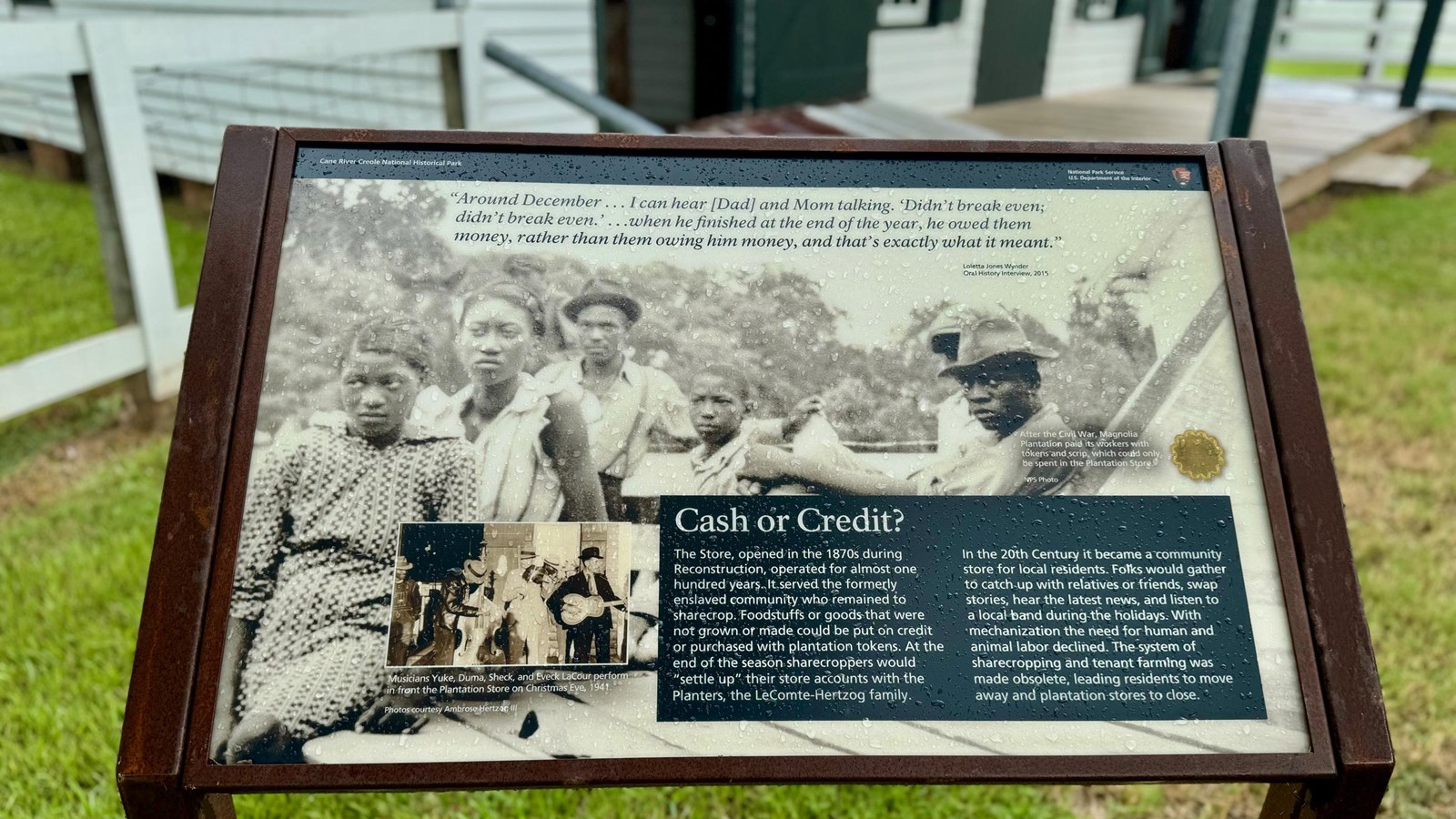Last updated: November 23, 2024
Place
Cash or Credit

Christy Hoover
Quick Facts
Location:
Natchez, LA
Amenities
1 listed
Historical/Interpretive Information/Exhibits
The Store, opened in the 1870s during Reconstruction, operated for almost one hundred years. It served the formerly enslaved community who remained to sharecrop. Foodstuffs or goods that were not grown or made could be put on credit or purchased with plantation tokens. At the end of the season sharecroppers would "settle up" their store accounts with the Planters, the LeComte-Hertzog family.
In the 20th century, it became a community store for local residents. Folks would gather to catch up with relatives or friends, swap stories, hear the latest news, and listen to a local band during the holidays. With mechanization the need for human and animal labor declined. The system of sharecropping and tenant farming was made obsolete, leading residents to move away and plantation stores to close.
"Around December... I can hear [Dad] and Mom talking. 'Didn't break even; didn't break even.' ... when we finished at the end of the year, he owed them money, rather than them owing him money, and that's exactly what it meant."
-Lolette Jones Wynder
Oral History Interview, 2015
After the Civil War, Magnolia Plantation paid its workers with tokens and scrip, which could only be spent in the Plantation Store.
Musicians Yuke, Duma, Sheck, and Eveck LaCour perform in front the Plantation Store on Christmas Eve, 1941.
In the 20th century, it became a community store for local residents. Folks would gather to catch up with relatives or friends, swap stories, hear the latest news, and listen to a local band during the holidays. With mechanization the need for human and animal labor declined. The system of sharecropping and tenant farming was made obsolete, leading residents to move away and plantation stores to close.
"Around December... I can hear [Dad] and Mom talking. 'Didn't break even; didn't break even.' ... when we finished at the end of the year, he owed them money, rather than them owing him money, and that's exactly what it meant."
-Lolette Jones Wynder
Oral History Interview, 2015
After the Civil War, Magnolia Plantation paid its workers with tokens and scrip, which could only be spent in the Plantation Store.
Musicians Yuke, Duma, Sheck, and Eveck LaCour perform in front the Plantation Store on Christmas Eve, 1941.
